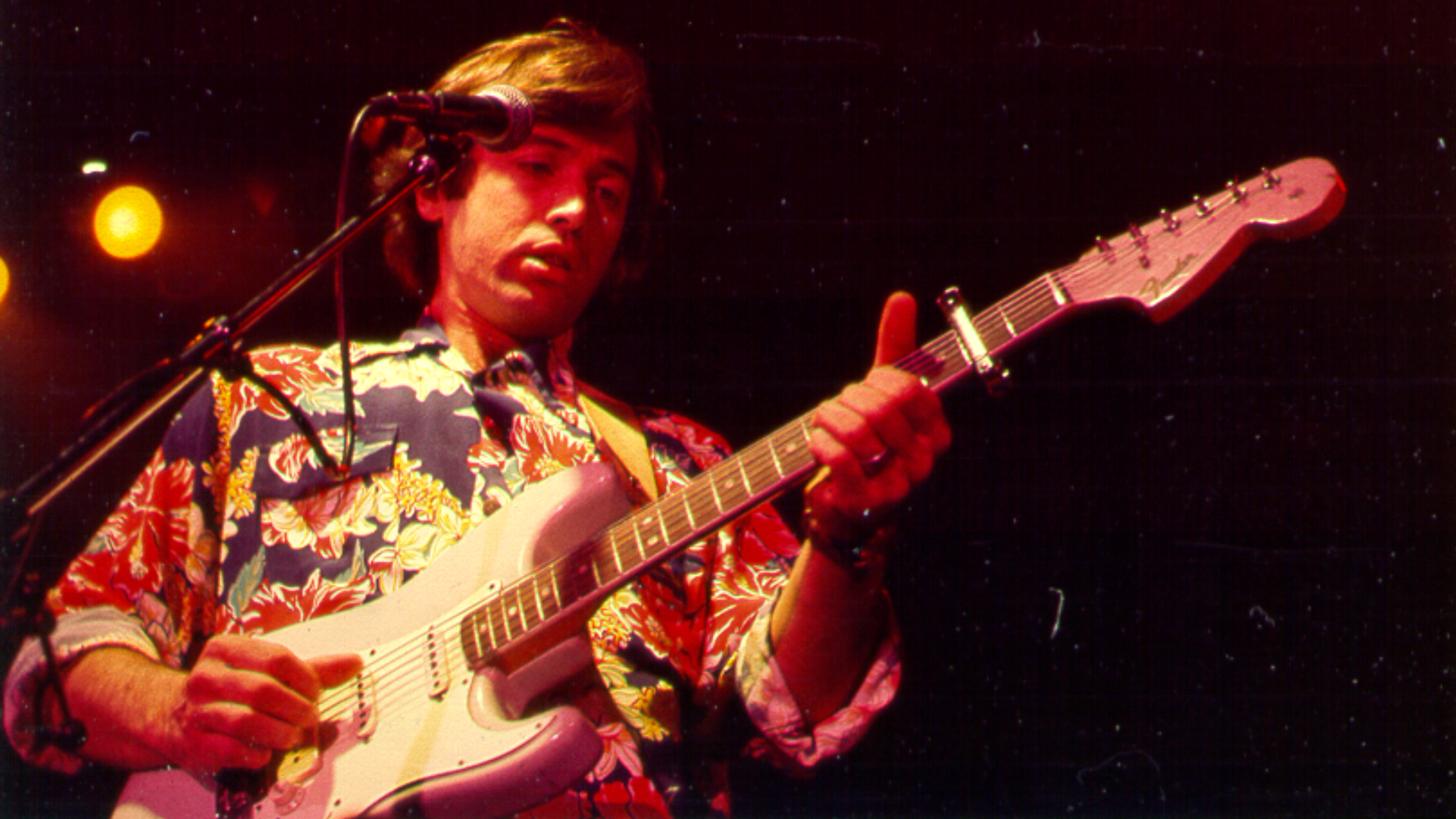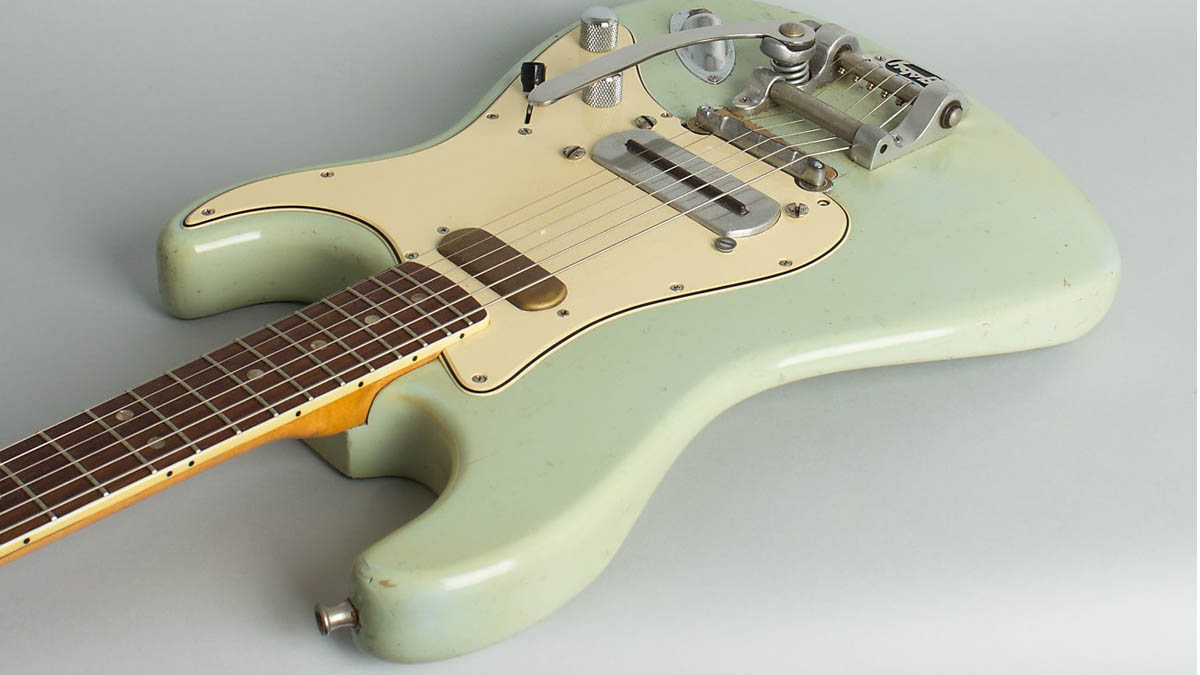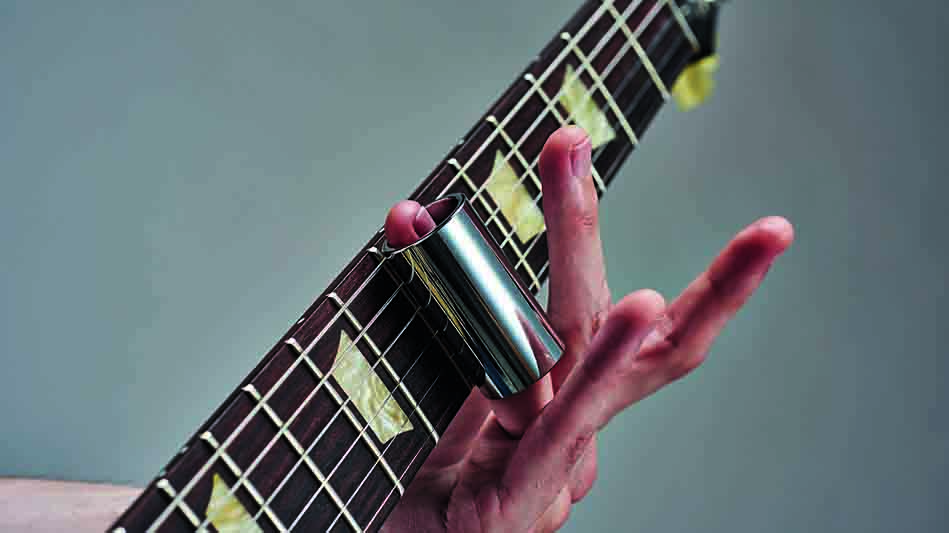Ry Cooder: 5 songs guitarists need to hear
A master musician and an American treasure who’s enjoyed a sweeping, idiosyncratic career arc quite unlike any other guitarist on the planet

By his late teens, Ry Cooder had already become a sought-after guitarist in Los Angeles and had formed a band with Taj Mahal called Rising Sons. As a session musician, he lent his bottleneck skills to the likes of Captain Beefheart, Little Feat and The Rolling Stones (that’s him playing the iconic slide part on ‘Sister Morphine’), and was even tipped to replace Brian Jones until clashes with Keith Richards - primarily over the authorship of Honky Tonk Woman - wiped out any chance of further involvement with the band.
Following his own creative nose, Cooder went on to make 16 solo albums (so far), numerous movie soundtracks and more collaborations than we could possibly count. His bizarrely modified and much loved old Fender Stratocaster even inspired a whole new sub-genre of guitars, dubbed “Coodercasters”.
Cooder’s style is particularly hard to define because, typically, he draws on multiple traditions at once, weaving together everything from American blues, country and folk, to jazz, Latin, Cuban, Cajun and Tex-Mex styles into a kind of musical patchwork quilt. His records are also often littered with references - both musical and lyrical - to bygone traditions and players. Put it this way, you’d probably want him on your team for the music round down the pub quiz.
Now, with a new album due to be released in collaboration with his old bandmate, Taj Mahal, Cooder has come full circle. Here, we take a trip back through some of the great man’s defining tracks of the last half century that every guitarist really needs to hear…
1. Get Rhythm - Get Rhythm (1987)
When most people think of Ry Cooder, they think of slide guitar and Get Rhythm, from the 1987 album of the same name, contains one of the most energetic and ripping slide guitar performances he has ever committed to tape.
As is the case with the majority of the material he released in the first half of his career, Get Rhythm is a cover - a buoyant reimagining of a Johnny Cash tune that was originally released in 1956 as the B-side to his first number one hit, ‘I Walk the Line’.
By elevating this humble country ditty to soaring slide blues-rock heights, Cooder’s Get Rhythm is indicative of his unique, precious talent for resurrecting and reinterpreting forgotten material from the American songbook - and it more than makes up for the lack of original songwriting.
Get the MusicRadar Newsletter
Want all the hottest music and gear news, reviews, deals, features and more, direct to your inbox? Sign up here.
While many of his earlier albums featured clean guitar tones, here Cooder lets loose a little and cranks the gain for a fat, sustain-soaked sound. It seems that even Johnny Cash found Cooder’s blazing rendition revelatory as he re-recorded the track in 1988 – just one year after Cooder – with the addition of a slide guitar solo and a more raucous, full band production.
To play Get Rhythm, Cooder uses a heavy glass slide, worn on his fourth finger, which leaves the other three fingers available for fretting notes behind the slide as well. In an interview with Guitarist magazine back in 2012, Cooder explained the importance of a weighty slide: "People use 'em too light and I don't see why they do that. But they do, and you don't get any tone that way." He also tunes his guitar to Open D (D-A-D-F#-A-D from low to high) with a capo at the third fret, placing the song in the key of F.
When you factor in his preferred weight of slide with the fact that a capo reduces the distance between the strings and frets, this set-up could be a recipe for some hideous fret-clonking, but in the masterful hands of Ry Cooder, there’s absolutely no chance of that. It’s simply a masterclass - and a joyride - from start to finish.
2. Tattler – Paradise & Lunch (1974)
Released on the 1974 record, Paradise and Lunch, the track ‘Tattler’ is proof that when the slide comes off, Ry Cooder’s rhythm guitar mojo is still second to none.
Born into a musical family and inspired by his folk singer father, the young Cooder learned Woody Guthrie and Pete Seeger songs, and long before even picking up an electric guitar, honed his finger-picking chops on the acoustic guitar and banjo. Reflecting his early exposure to the instrument, Cooder also applied banjo tunings, like Open G, to the guitar - and that’s exactly what we hear here on ‘Tattler’ (although it is shifted up a tone and a half by a capo at the third fret). Add to this a funky syncopated groove, a few banjo-inspired three finger rolls and lots of thumbed bass notes and you get a rhythm guitar parlance all of Cooder’s own.

The original Ry Cooder Coodercaster is for sale on Reverb, asking price $150,000
The track is also noteworthy because it comes with something rarely seen in the early days: a Ry Cooder songwriting credit. ‘Tattler’ was based on a 1929 Washington Phillips song called ‘You Can't Stop a Tattler - Part 2’, but Cooder modified the melody and added his own chorus.
The track’s fingerpicked beginning is unaccompanied by other instrumentation, and it’s a great opportunity to appreciate the gorgeous tone Cooder achieves. For this record, he played through a Leslie cabinet with a rotating speaker, yielding that deep tremolo effect. At this time, Cooder also only used one electric guitar for all his recordings: his now legendary Daphne Blue 1967 Fender Stratocaster.
Over the years, this Strat - or Coodercaster, as it became known - would undergo many mods until it went up for auction in 2020, configured with a Bigsby eight-string steel pickup at the bridge, a late 1950s Guyatone pickup at the neck and a Bigsby tremolo.
However, if you check out Cooder’s 1977 performance of Tattler on the Old Grey Whistle Test, you can see and hear the guitar as it was not long after the album was recorded. Here it has a P-90 in the bridge position – a comparatively minor mod – that gives a slightly thicker sound than a stock Strat pickup would have.
3. Paris Texas – Original Motion Picture Soundtrack
No list of Ry Cooder’s greatest guitar tracks would be complete without acknowledging his talent for composing soundtracks, and his work on the Wim Wenders film Paris, Texas is arguably the most significant of his career.
After several years of limited commercial success with his solo records, Cooder finally achieved household name status when the film, and its soundtrack, became huge smashes in 1984.
Based on Blind Willie Johnson’s 1927 transcendental gospel blues recording, Dark Was The Night, Cold Was The Ground, Cooder’s sparse and evocative ‘Paris, Texas’ theme not only epitomises the desolation and melancholy of the film, but is yet another reminder of Cooder’s ability to call upon his encyclopaedic knowledge of traditional roots music.
For the piece, he coaxes haunting and atmospheric slide tones from his 1950s Martin 000-18 acoustic. It’s an incredibly detailed recording: you can hear the occasional left-hand squeak as he changes fret positions, and you can hear the sound of the glass bottleneck rubbing on steel as the energy from plucked notes dissipates, and he tries to vibrate every last millisecond of sustain out of the strings. These intimate details add to the rustic aesthetic of the entire piece.
Cooder also got in tune - literally as well as metaphorically - with the Mojave Desert landscape to write for the film. In a 2018 BBC Radio 4 segment called ‘From Buena Vista to gospel and blues’, he explains how Wenders “did a very good job at capturing the ambience out there in the desert, just letting the microphones and the nagra machine roll and get tones and sound from the desert itself, which I discovered was E flat - was in the key of E flat - that’s the wind, you know, was nice. So we tuned everything to E flat."
Although the Paris, Texas soundtrack was originally released in the 1980s, music from the film appears alongside many of Cooder’s other greatest soundtrack works - including Across The Borderline, Theme From Southern Comfort and The Long Riders - on the 1995 compilation album, Music by Ry Cooder.
4. Don't Bug Me When I'm Working – Little Village (1992)
Time now for a slightly more obscure entry with Don’t Bug Me When I’m Working from Cooder’s highly underrated early 1990s ‘super band’ project with Nick Lowe, Jim Keltner and John Hiatt.
The four musicians came together under the name Little Village after having previously worked together on John Hiatt’s exceptional 1987 breakthrough record, Bring The Family’. For further listening, check out the exquisite slide solo Cooder laid down on Hiatt’s Lipstick Sunset – but be prepared to get emotional if you do.
Little Village promised great things but struggled under the weight of massive expectation, leaving behind just this one self-titled record. We could have picked just about any track from the album for this list, but the attitutide-stuffed album closer, Don’t Bug Me When I’m Working is a real highlight.
The track, and the album as a whole, resonates with a camaraderie that isn’t always heard in Cooder's solo work, and the guitar solo on Don’t Bug Me When I’m Working is a rare example of some real macho swagger in his lead playing.

With slide guitar, how you approach any given note adds just as much colour and feel as the actual note itself. Here, Cooder nonchalantly slinks up and down the neck like there’s plenty of time to spare en route to his destination frets. Think of a lazy Texas drawl – then imagine that translated onto the strings of a guitar. He also steers clear of the top two strings – most people’s usual territory for soloing - and instead of wailing, delivers a calm and collected lead performance that simply oozes cool.
Later in the track, listen out for samples taken from a 1957 Sonny Boy Williamson recording session where some expletive studio chatter between takes was left in. The song he was recording at the time was called ‘Little Village’ - or as he can be heard telling his frustrated producer, Leonard Chess: “It’s Little Village, motherfucker!” From this, the band took their name, and as far as musical Easter eggs go, it doesn’t get a whole lot cooler - or nerdier - than this!
5. Poor Man's Shangri-la – Chavez Ravine (2005)
We could quite easily have chosen another song with a badass guitar solo as the fifth and final track in this list, but much of the genius of Ry Cooder’s playing is in its understatedness and its ability to enhance any given song’s narrative.
Poor Man’s Shangri-La, from Cooder’s 2005 concept album Chavez Ravine, transports the listener to a bygone era of “cool cats”, UFO sightings, Chicano culture and corporate greed in post-war Los Angeles through some sublimely tasteful fingerstyle playing, fluid rhythms and Latin jazz-inspired chord progressions.
For context, before Chavez Ravine, Cooder hadn’t released a solo album since 1987’s Get Rhythm, and had instead spent his time exploring all corners of the musical world – trying out various flavours of ensemble music where the guitar was not always front and centre. Most notably, he brought traditional Cuban music to the ears of millions with 1997's Buena Vista Social Club.
Once back in his hometown of Los Angeles, Cooder became inspired by a book of black-and-white photographs showing the once vibrant Mexican-American hillside community of Chavez Ravine, which was bulldozed in the 1950s in the name of 'development' (you may have noticed by now that Ry Cooder albums don’t tend to be about Ry Cooder.)
Cooder set about reanimating a lost community that had once buzzed with a look, feel and – most importantly – sound of its own. The area is now buried beneath the Los Angeles Dodgers Stadium, so imagine his guitar as part musical instrument, part time machine, and part archaeologist’s shovel.

In terms of genre, Poor Man’s Shangri-La is hard to pin down, and has all the flavours of Latin jazz, rumba, pop and traditional conjunto dance music. "In Latin, the rhythm is supple. It's very graceful," Cooder explained in a 2005 interview with The CS Monitor. "You can really hear it in the Cuban [music], all of those qualities. Very refined. Elegant. Mysterious, almost. Because it's dance music, there's a lift in the rhythm to let the dancers glide along."
Notice also that, as Cooder’s right hand technique travels through languid picked patterns to rhythmic chords, one thing remains constant: this is a 100% plectrum free zone. In fact, Cooder never uses a pick, giving his playing a warmer, more organic overall feel.
Ellie started dabbling with guitars around the age of seven, then started writing about them roughly two decades later. She has a particular fascination with alternate tunings, is forever hunting for the perfect slide for the smaller-handed guitarist, and derives a sadistic pleasure from bothering her drummer mates with a preference for “f**king wonky” time signatures.
As well as freelancing for MusicRadar, Total Guitar and GuitarWorld.com, she’s an events marketing pro and one of the Directors of a community-owned venue in Bath, UK.
“Every note counts and fits perfectly”: Kirk Hammett names his best Metallica solo – and no, it’s not One or Master Of Puppets
“I can write anything... Just tell me what you want. You want death metal in C? Okay, here it is. A little country and western? Reggae, blues, whatever”: Yngwie Malmsteen on classical epiphanies, modern art and why he embraces the cliff edge










